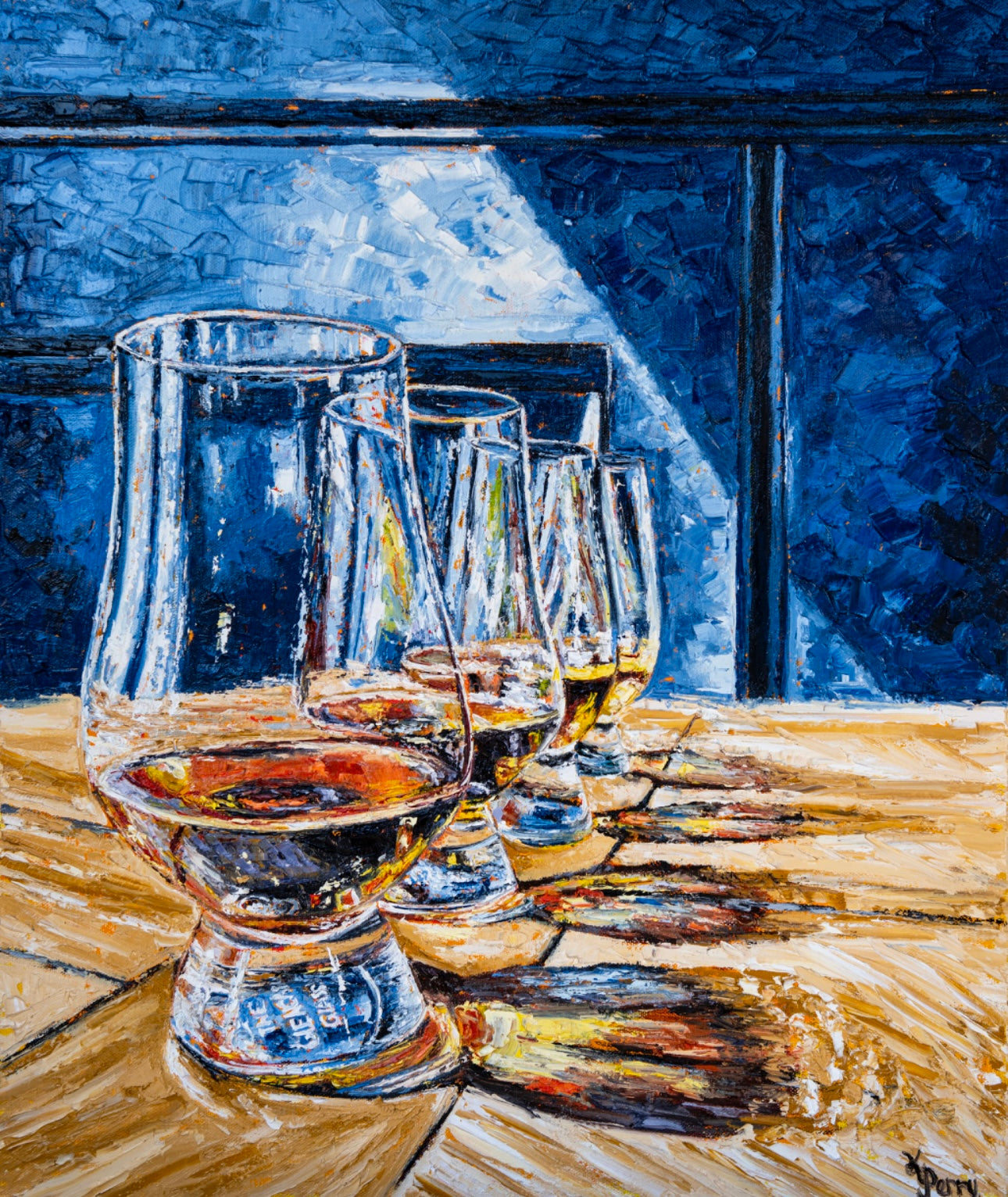Capturing the Essence of Bourbon Art With One-of-a-kind Visual Depictions and Designs
The art of bourbon expands beyond the fluid itself, materializing via a variety of visual depictions that encapsulate its fabled heritage and craftsmanship. What remains to be discovered is exactly how these progressing designs show not only the bourbon itself but likewise the altering landscape of artistic interpretation. Whiskey Art.
The Background of Scotch Art

As bourbon production spread, so too did the wish to elevate its experience with art. From the intricate inscriptions on very early barrels to the sophisticated tags of modern containers, each component mirrors a distinct imaginative vision, functioning as an aesthetic story of the scotch's heritage.
In the 19th and 18th centuries, the increase of the industrial transformation even more boosted bourbon art, resulting in cutting-edge packaging and marketing that caught customer attention. Developers and artists began try out aesthetics, imbuing whiskey-related images with symbolic definitions that conveyed ideas of craftsmanship, practice, and community.
Today, whiskey art remains to evolve, mixing typical techniques with contemporary art kinds. Limited Edition. This recurring discussion in between the spirit and its graph underscores the enduring bond in between whiskey and society, enhancing the general experience for enthusiasts worldwide
Iconic Container Layouts
While numerous variables add to the allure of bourbon, iconic bottle layouts play an essential role in shaping customer understanding and improving the total experience. The visual presentation of scotch bottles is not simply a visual consideration; it offers as a bridge in between the item and the consumer, evoking feelings and setting assumptions.
Unique forms, materials, and closures can raise a scotch brand name's identity, making it immediately recognizable on congested racks. As an example, the classic Glenfiddich container, with its stylish tapered shape, communicates a feeling of practice and workmanship, while the strong, modern layout of the Balvenie bottle mirrors development and elegance. The use of tinted glass or distinct structures can suggest the high quality and personality of the scotch within.
Legendary styles frequently integrate elements of social heritage, representing the brand's history and link to its roots. Brand Names like Jack Daniel's use a straightforward, robust design that reverberates with its American bourbon heritage. Eventually, the impact of bottle style expands beyond mere functionality; it encapsulates the essence of the brand name, welcoming customers to check out and indulge in the abundant tapestry of scotch society.
Label Artwork and Branding
Container designs usually establish the phase for what customers can expect, but label art work and branding play a just as significant duty in connecting a whiskey's identity. The tag functions as the initial factor of contact in between the consumer and the read what he said product, enveloping the significance of the bourbon within its visual elements.
Efficient tag artwork integrates typography, shade, and images to develop a narrative that reverberates with the brand's heritage and target market. A tag including vintage typefaces and elaborate illustrations might stimulate a feeling of custom and craftsmanship, appealing to lovers. In contrast, vibrant colors and contemporary design aspects might attract a younger demographic seeking advancement and exhilaration.


Photography and Visual Storytelling
Recording the essence of whiskey with photography and visual narration is an art form that elevates the brand experience. This tool transcends mere product depiction, diving into the intricate stories that border each bottle. By employing compelling images, digital photographers can stimulate feelings that resonate with consumers, inevitably creating a deeper connection to the bourbon brand name.
Visual storytelling in scotch digital photography often utilizes abundant textures, lights, and structure to highlight the special qualities of the spirit. The interplay of light and darkness can emphasize the brownish-yellow shades of whiskey, while the choice of background elements-- such as rustic barrels or sophisticated glass wares-- can reinforce the brand's heritage or lifestyle associations.
Furthermore, recording the ritualistic aspects of whiskey consumption, from the pouring to the sampling, invites audiences right into a sensory experience, enabling them to imagine the tastes and fragrances that await. Each photo not just showcases the product however additionally narrates of workmanship, practice, and the minutes that bourbon can enhance - Realism Art. Therefore, photography becomes a powerful device in articulating the identification of scotch brand names, positioning them within the wider social landscape
Emerging Fads in Whiskey Art
The development of bourbon art is significantly shaped by modern fads that show broader social shifts and customer preferences. One prominent pattern is the assimilation of sustainability into art methods. Musicians are now utilizing green procedures and recycled materials to create whiskey-themed pieces, resonating with environmentally mindful customers. This shift not only highlights the importance of sustainability yet additionally enhances the narrative bordering scotch manufacturing.
Furthermore, electronic art has risen in popularity, enabling for cutting-edge depictions of scotch. Musicians are leveraging technology to craft immersive experiences, such as augmented fact Get More Info setups that involve visitors and offer a deeper understanding of bourbon's social importance. This fad additionally encompasses social media sites systems, where aesthetically striking content amasses attention and promotes area amongst enthusiasts.
Moreover, collaborations between bourbon brands and musicians are coming to be extra widespread. These partnerships generate limited-edition packaging layouts and unique artworks that commemorate both the craftsmanship of bourbon and the creativity of artists. As bourbon art remains to advance, these emerging patterns will undoubtedly shape its future, promoting a vibrant intersection of culture, sustainability, and technology within the whiskey area.
Final Thought
Finally, the art of bourbon incorporates a diverse selection of graphes that show its rich heritage and craftsmanship. From renowned bottle designs and elaborate tag art work to compelling photography, each aspect adds to a more comprehensive story that boosts the customer's experience. As emerging patterns, such as digital art and sustainability, proceed to shape this creative landscape, the diverse identity of whiskey continues to be a sustaining resource of cultural link and expedition.

In verdict, the art of bourbon encompasses a diverse range of aesthetic representations that mirror its rich heritage and workmanship.